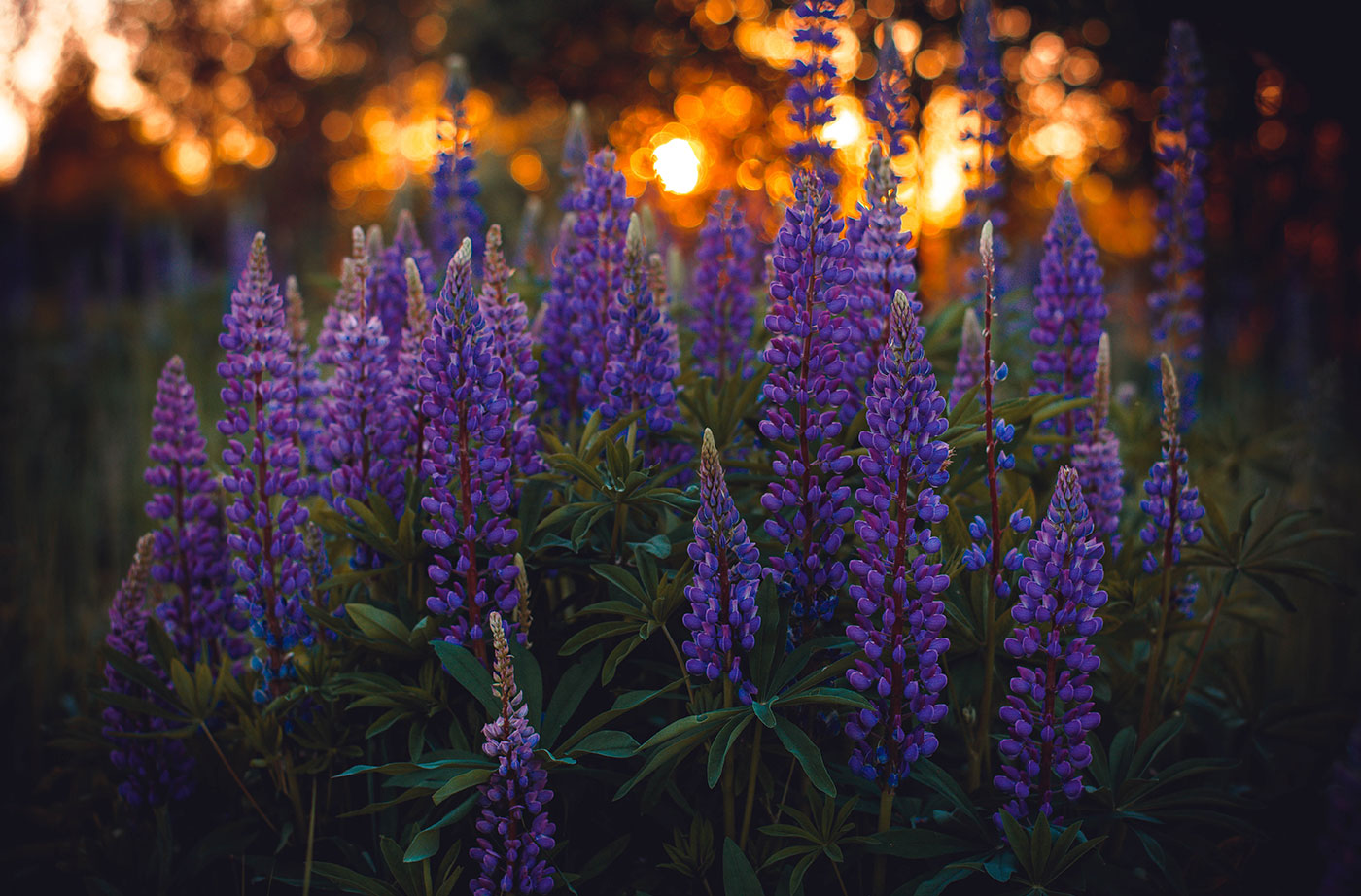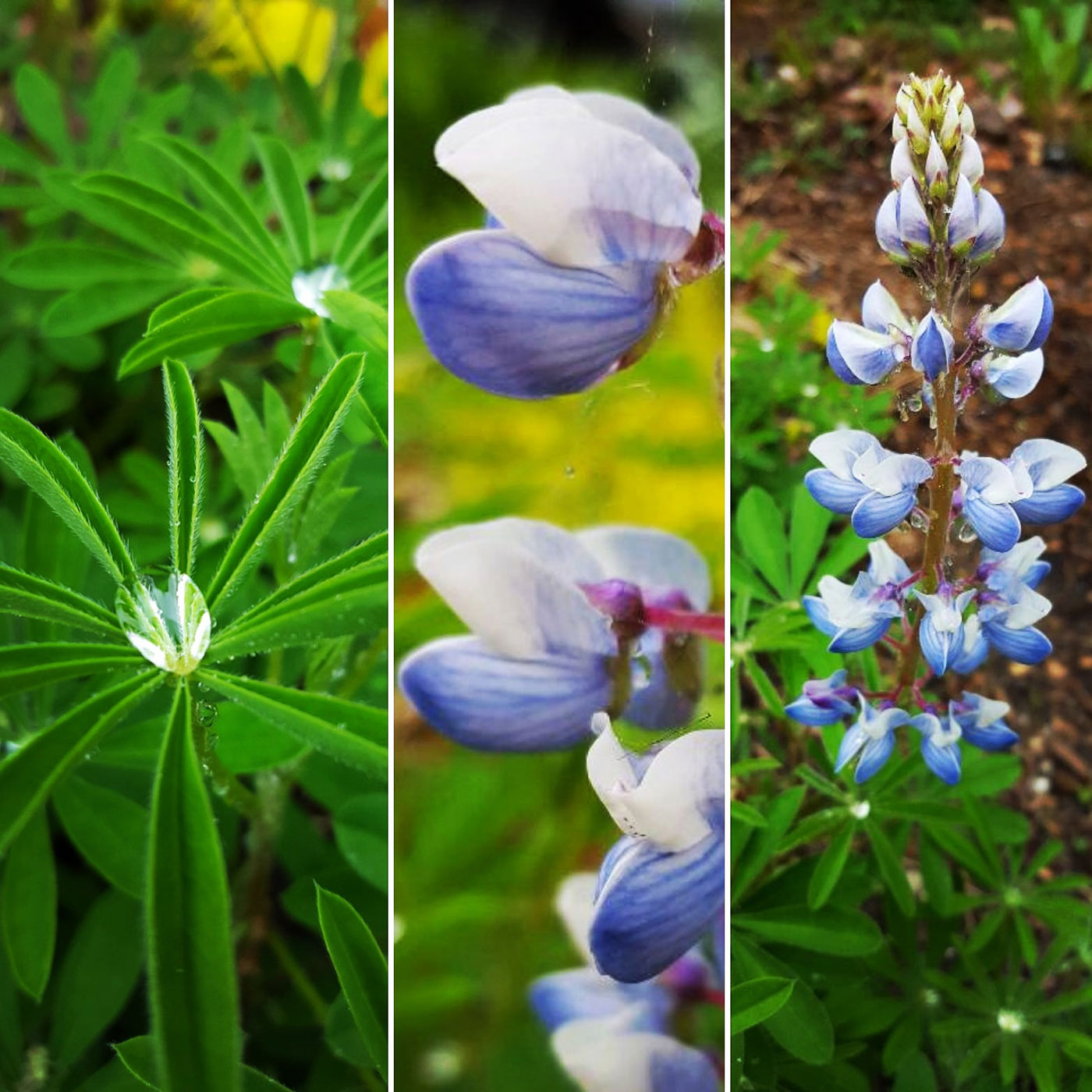You can’t miss all the lovely lupines in bloom right now. They are the poster child for the quintessential Maine summer — universally loved and cherished. And who could forget Miss Rumphius (The Lupine Lady)? The prolific lupines of Maine’s countryside are actually native to the West Coast and have only been here since the 1950s. The real Miss Rumphius is partially responsible for “decorating” Maine with masses of these Bigleaf Lupine (Lupinus polyphyllus).

Bigleaf Lupine, Lupinus polyphyllus (Irina Kostenich)
Maine’s true lupine is Sundial, or Wild Lupine (Lupinus perennis) and is extirpated (locally extinct) from Maine. We can bring the wild lupine back by planting this native species in our rocky, sandy soils in full sun.

Wild Lupine, Lupinus perennis (Deborah Perkins)
I planted these in our own habitat garden last year, and they are thriving. Compared to the naturalized variety, these wild lupines are small and more understated, but they pack a punch. They serve as a larval host for many species of generalist moths and butterflies. Wild lupine is also the (only) larval host for the endangered Karner blue butterfly (which is also extirpated from Maine, but can still be found in the Concord Pine Barrens of New Hampshire). The plant lacks nectar, but the pollen is consumed by mining bees, mason bees, and bumble bees.
And, get a load of this….
Did you know that lupines can actually signal to a bee that the pollen rewards are gone or almost gone? It’s true! After pollination occurs, the petals change color as a way of saying “no more here, try the next flower…” This re-directs the bee to a flower that needs pollination.
Is that just the coolest thing ever? I think so.
—Deb Perkins
Sometimes protecting the earth can seem overwhelming. But there are things people can do in their own yard to make the world a better place for native wildlife. On her NRCM blog, Deb Perkins generously shares her 25 years of knowledge and experience with readers of this blog. The tips she provides here are just a small sampling of what she provides to clients interested in creating habitat for birds, bees, butterflies, and other wildlife. Visit her First Light Wildlife Habitats for more information about how Deb can help you enhance your property for the benefit of native wildlife.










Where may one obtain seeds?
Maine-based Wild Seed Project https://wildseedproject.net will have native Sundial lupine (Lupinus perennis) seeds available 9/15 (when it’s appropriate to sow them); https://shop.wildseedproject.net/products/sundial-lupine-lupinus-perennis-seeds?variant=6583905222686
*note – they’ll cross-pollinate with Bigleaf lupine (Lupinus polyphyllus), so be prepared to remove any invasives.
Fascinating!
Lynn,
The Wild Seed Project normally has them, but are currently sold out. https://shop.wildseedproject.net/products/sundial-lupine?variant=6583905222686
Small native nurseries sell the plants. Where are you located?
Deb
Would love to get seeds for our grandchildren to sow – they come to us on Deer Isle from overseas each summer and a favourite book is Miss Rumphius!
Where can I find seeds by July 14?
I would like to visit Christmas Cove when the flowers are in bloom. Any suggestions when I should plan to come? Thanks for your help!, Kathleen
Hello Kathleen! The best time to view the lupine in bloom is sometime in June. Hope you can make the trip to Christmas Cove then. Thank you for reading our blog.
I love wildflowers and am a writer and a naturalist – so am delighted to have found you!
Hello Deborah, someone recently told me that lupinus perennis will cross with polyphyllus if they are growing near each other. I’ve never heard of hybrids of these two species, do you know of this happening?
I’ve heard of this too, Andrea – although I haven’t experienced it in my own habitat garden.
Can I be reasonably sure that the seeds I ordered (not from the Wild Seed Project) are not hybridised? And if they’re at least mostly L. perennis can the Karner Blue still use it?
Hello Jon! Where are you sourcing the seeds? If they are Lupinus perennis you’ve done the best you can and I don’t believe they will be hybridized. Sadly, the Karner Blue is extirpated from Maine, but if you live near the Concord Pine Barrens in NH, your plants could certainly help this endangered butterfly. My hope is that their range might eventually expand back out and we will have them in Maine again (but only if we plant lots of L. perennis!). Thank you for being here! – Deb (author, and Your Personal Ecologist 😉 )
I am in Durham, NH and would love to get some Sundial Lupine seed to plant in a roadside bed on my property. So, I have a few questions: (1) Is it illegal to plant L. perennis in NH?; (2) If so, why exactly?; (3) If not, how can I get some seed — or plants, I suppose — to plant in NH, especially if it is an “approved” NH source that won’t pose a threat to the existing NH L. perennis gene pool?; (4) Will L. perennis “play well” with Asclepias tuberosa? I am already cultivating some in the bed where I would like to put the L. perennis.
Ti – great questions! You’ve done your research. For example, Wild Seed Project (based in Maine) cannot ship seeds to NH. I have written to the NH State Botanist with your questions and hope to have a thorough answer straight from the expert. Stay tuned.
Hello, Deborah — Ever hear anything back from the NH State Botanist? Who is it, btw? I might even know them.